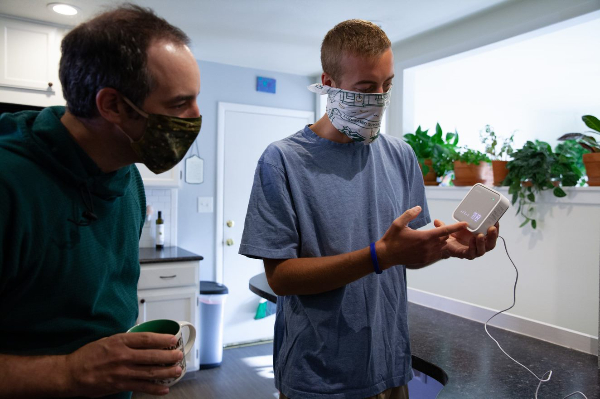
Colorado State University Research Finds Epic Homes Have Improved Comfort and Air Quality#

About the Study
In partnership with Epic Homes, Colorado State University conducted an indoor environmental quality (IEQ) study to improve our understanding of the connections between community health and well-being and energy efficiency upgrades. The IEQ of a building includes air quality, comfort and safety.
- The study measured and analyzed IEQ indicators before and after the home upgrades.
- Participation was not a requirement to participate in other Epic Homes/Efficiency Works™ Homes programs.
What are the potential health and well-being impacts from energy efficiency upgrades?
More than two-thirds of our lives are spent indoors. Research has shown that negative health and well-being symptoms and conditions are associated with poor IEQ. Independently, studies have indicated that energy efficiency upgrades can impact indoor air pollution, comfort, affordability and stress.
One of the focus areas of the CSU study was to measure the amount of infiltration of outdoor air pollution, which can lead to environmental health risks. Exposure to outdoor air pollution is also a modifiable health risk factor where, in Fort Collins, small improvements can make a big difference.
Preliminary results of the study have shown the following potential impacts from energy efficiency upgrades may include:
- Reduced energy cost burden
- Improved perception of home
- Improved thermal comfort
- Reduced infiltration of outdoor air
- Improved indoor air quality
These factors, among others, can influence:
- Respiratory health, sleep environment and quality stress
- Cardiovascular, respiratory and cancer risk
- Mental health
- Quality of life
Talk to an expert about your home efficiency journey!
Discuss opportunities and benefits that efficiency upgrades can provide to your home, project bids, project planning, or any other questions that you may have.
Epic Homes is your one-stop shop for efficiency resources
The Epic Homes program is your one-stop shop for home and rental property energy efficiency upgrades. It connects Fort Collins Utilities’ customers to free virtual energy advising, discounted in-home energy assessments, rebates, attractive loans, and an Epic Certificate with a Home Energy Score.
Did You Know?
Installing occupancy sensors where lights frequently are left on when no one is present can help save money and energy.
The fireplace damper and doors should be closed when not in use. It prevents warmed or cooled air from easily escaping the house.
There are many ways to pay your bill, including online, in-person and by phone.